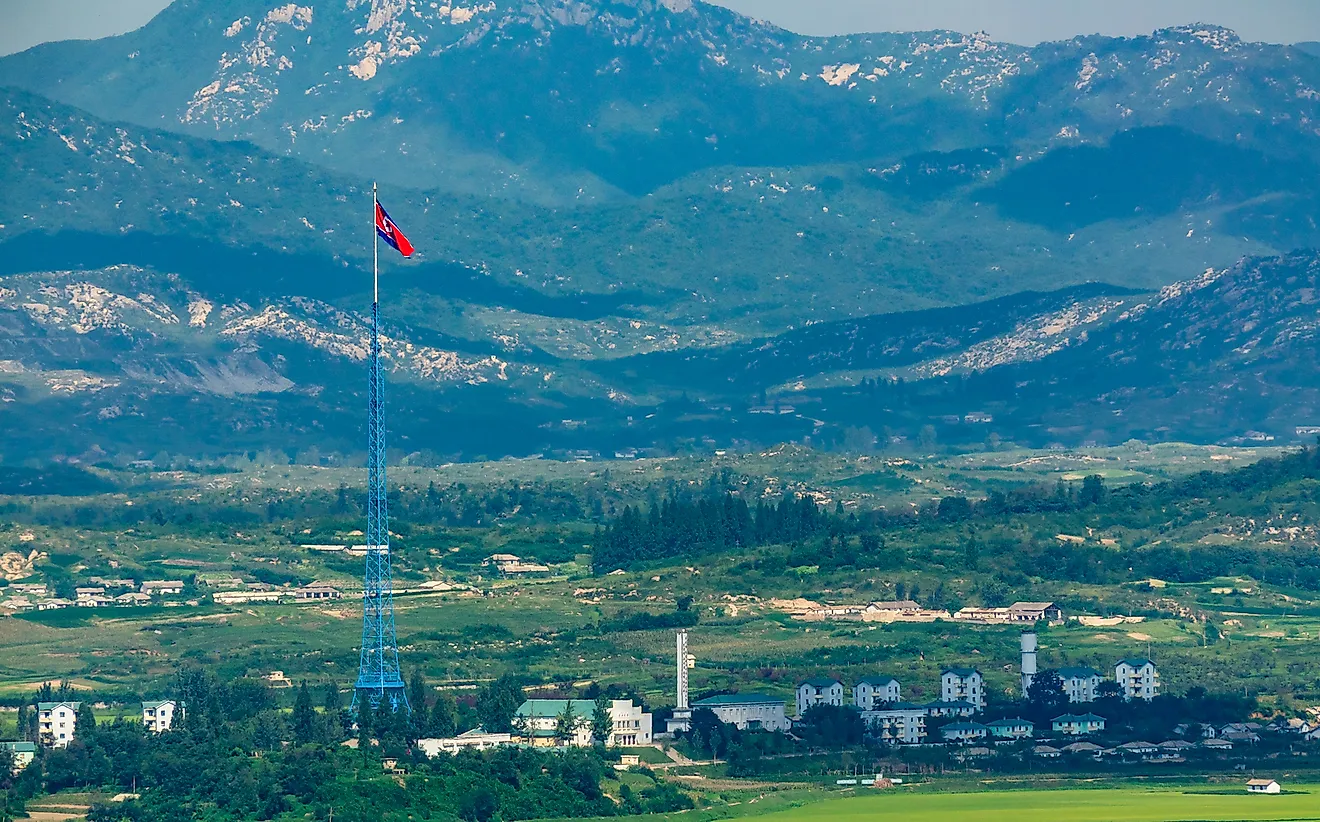Does North Korea Have a Fake City?

The Democratic People’s Republic of Korea, popularly known as North Korea, is a territory in East Asia shrouded by mystery in a lot of ways. When it comes to the mysterious nature of North Korea, one village located near the Korean Demilitarized Zone seems to stand out.
Located on the border between South and North Korea is the town of Kijong-Dong, popularly known as the Peace Village in North Korea. The village is visible from the hilltop checkpoints in South Korea and appears just like any other village. It is one of the only two villages allowed to remain in the 2.5-mile-wide DMZ (the other village is Daeseong-dong in South Korea). However, South Koreans and the outside world view it as a “fake city” and often refer to it as a “Propaganda Village.”
What Does the Village Look Like?
Kijong-Dong is situated on the northern side of the DMZ. It comprises of concrete high-rise and low-lying buildings and houses surrounded by extensive and cultivated agricultural farms. The buildings are brightly painted and are wired for and provided with electricity.
The residential buildings are constructed near a high pole flying the North Korean flag. These buildings feature bright-blue rooftops and white side-walls. Although the structures appear as well-built and with distinguishing features, it has been revealed that they are mere shells with no window glasses and interior rooms.
Some structures have painted windows. When night falls, light is switched on and shines brightly in the upper windows but is dimmer close to the floor, suggesting that the buildings may not have even floors. During the day, caretakers can be seen sweeping the sidewalks, perhaps to convince you that there is life in the village. According to the North Korean government, about 200 people live in Kijong-Dong.
The Loudspeakers
From a distance, you can hear music blaring from loudspeakers. The massive propaganda loudspeakers are mounted on the walls of several buildings facing the south and often deliver DPRK propaganda broadcasts. Initially, the broadcasted messages were mainly detailed virtues of North Korea but soon switched to anti-Western messages.
The broadcasts were temporarily stopped between 2004 and 2015 but resumed in 2016 following the nuclear test of January 2016. As a gesture of goodwill for the 2018 inter-Korean summit, South Korea which also had propaganda loudspeakers halted its broadcasts at midnight on April 22, 2018, just five days before the summit.
The Flagpole
In the 1980s, the government of South Korea built a 323-foot tall flagpole with 287-pound of its flag in Daeseong-dong (the other village in the DMZ). In response, the North Korean government built an even taller flagpole known as the Panmunjom flagpole in the Peace Village. This flagpole is 525-foot tall with a 595-pound flag of DPRK. It was built approximately 0.7 miles across the demarcation line in South Korea and is sometimes called “flagpole war.”
The North Korean flagpole is currently the third-tallest flagpole in the world after Dushanbe Flagpole and Jeddah Flagpole in Tajikistan and Saudi Arabia respectively.
Why a Propaganda City?
Although the North Korean government claims that the village is completely functional and serviced by schools and health care facilities, the South Korean and the outside world believe that the village was built to spread propaganda and encourage defection of people in South Korea into North Korea, as well as house the Korean People’s Army.











